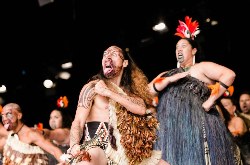NZ's First Centre of Space Research Established
NZ’s first Centre for Radiophysics & Space Research Established
The Auckland University of Technology (AUT) has established the country’s first Centre for Radiophysics and Space Research, staffed by some of the country’s leading radio astronomers, and chaired by eminent astrophysicist Sir Ian Axford.
AUT, through this Centre, is involved in a major international project – Very Large Baseline Interferometry (VLBI) – working alongside Australian scientists seeking to extend their VLBI network into New Zealand.
VLBI is based on simultaneous observation by several radio telescopes which permit the structure of distant radio sources to be determined. It will allow the study tectonic plate movements (NZ is located on two colliding tectonic plates – Pacific and Australian), the atmospheric ozone concentration and variations in the parameters of the Earth’s rotation.
AUT is a member of the International VLBI Service, which provides navigation for spacecraft sent to other planets, and supports the International Terrestrial Reference Frame – the basis for the World Coordinate System.
Internationally recognised radio astronomer, AUT’s Sergei Gulyaev, says the first experiment using VLBI is being planned between NZ (AUT) and Australia (Swinburne University of Technology) in the next three to four months.
“It will enable participating institutions to provide high-quality teaching and postgraduate research in astrophysics, astronomy and geodesy and would strengthen Trans-Tasman international links through participation in key multinational research programmes,” Prof Gulyaev says.
Sir Ian says this is an ideal involvement for AUT.
“It fits extremely well with the teaching programme at AUT in that it is close to electrical engineering and computer science. With its two radio astronomers, Prof Gulyaev and Dr Slava Kitaev, the project also brings AUT into the forefront of research in this field,” Sir Ian says.
Also associated with the VLBI project is the ambitious international Square Kilometre Array (SKA) project, and the opportunity for New Zealand to participate, again through AUT.
AUT’s Centre for Radiophysics and Space Research (CRSR) was accepted as the New Zealand partner in the Australasian SKA Consortium following a presentation from Sir Ian and Prof Gulyaev, and invited to contribute to their bid to host this $A2 billion radio telescope array.
The project affords an unparalleled opportunity for the scientific communities of Australia and New Zealand, to participate in what will be one of the world’s biggest science projects. SKA will study among other things; the centre of our Galaxy – the Milky Way - and the most powerful sources of energy in the Universe, the nuclei of active galaxies and quasar systems.
“If successful with its bid, the Australasian SKA Consortium’s hosting rights will entail enormous economic, infrastructure and technological benefits for Australia and New Zealand,” says Prof Gulyaev.
“Constructing a cluster of radio telescopes with an effective area more than 100 times greater than the largest radio telescope ever built will give a significant boost to the research capacity and capability of all countries involved,” he says.
SKA is referred to as a “digital” radio telescope, because it uses the most modern digital techniques, including supercomputing and broadband communication. A project being developed by Swinburne University of Technology and AUT is an e-VLBI prototype of SKA. This is a new approach to the VLBI technique which uses dedicated internet resources to send data from all the telescopes to a supercomputer, which can cross-correlate the huge amount of data in real-time.
In mid-December, International SKA Project Director Richard Schilizzi (from the Netherlands), and the Director of the Australian National Telescope Facility and Vice-president of the International SKA Committee Bryan Boyle will attend a workshop for SKA/VLBI at AUT and hope to meet with representatives of the NZ Government to present the SKA project.
Participating in SKA would have great educational, scientific and economical spin-offs for NZ. It could eventually yield financial benefits comparable to the Lord of the Rings and even the America’s Cup.
More importantly, says Sir Ian, it will bring NZ astrophysicists and radio astronomers to the forefront of the field and allow them to participate in the most advanced radio astronomy in the world. “It will tell us so much more about what is going on in these distant radio sources and about the structure of the whole universe. For years, no one could tell us what they were but now these radio sources have been found to inhabit the most distance regions of the universe. They will tell us not only about their nature but will give us an understanding of the fundamental structure of the universe,” Sir Ian says.


 NZEI Te Riu Roa: Mandated Single Approach To Reading Will Not Work
NZEI Te Riu Roa: Mandated Single Approach To Reading Will Not Work The Conversation: Could The School Phone Ban Work?
The Conversation: Could The School Phone Ban Work? Public Health Communication Centre: To Avoid A Measles Epidemic, Aotearoa Must Close The ‘Immunity Gap’
Public Health Communication Centre: To Avoid A Measles Epidemic, Aotearoa Must Close The ‘Immunity Gap’ Heritage New Zealand: Kid-friendly Archaeology Resource Kit Launched As Part Of Archaeology Week
Heritage New Zealand: Kid-friendly Archaeology Resource Kit Launched As Part Of Archaeology Week Tatai Aho Rau Core Education: Cyber Skills Programme For Tamariki Recognised At Māori Language Awards
Tatai Aho Rau Core Education: Cyber Skills Programme For Tamariki Recognised At Māori Language Awards Waitaha Kapa Haka: Waitaha-South Island Kapa Haka Celebrates 60th Anniversary
Waitaha Kapa Haka: Waitaha-South Island Kapa Haka Celebrates 60th Anniversary